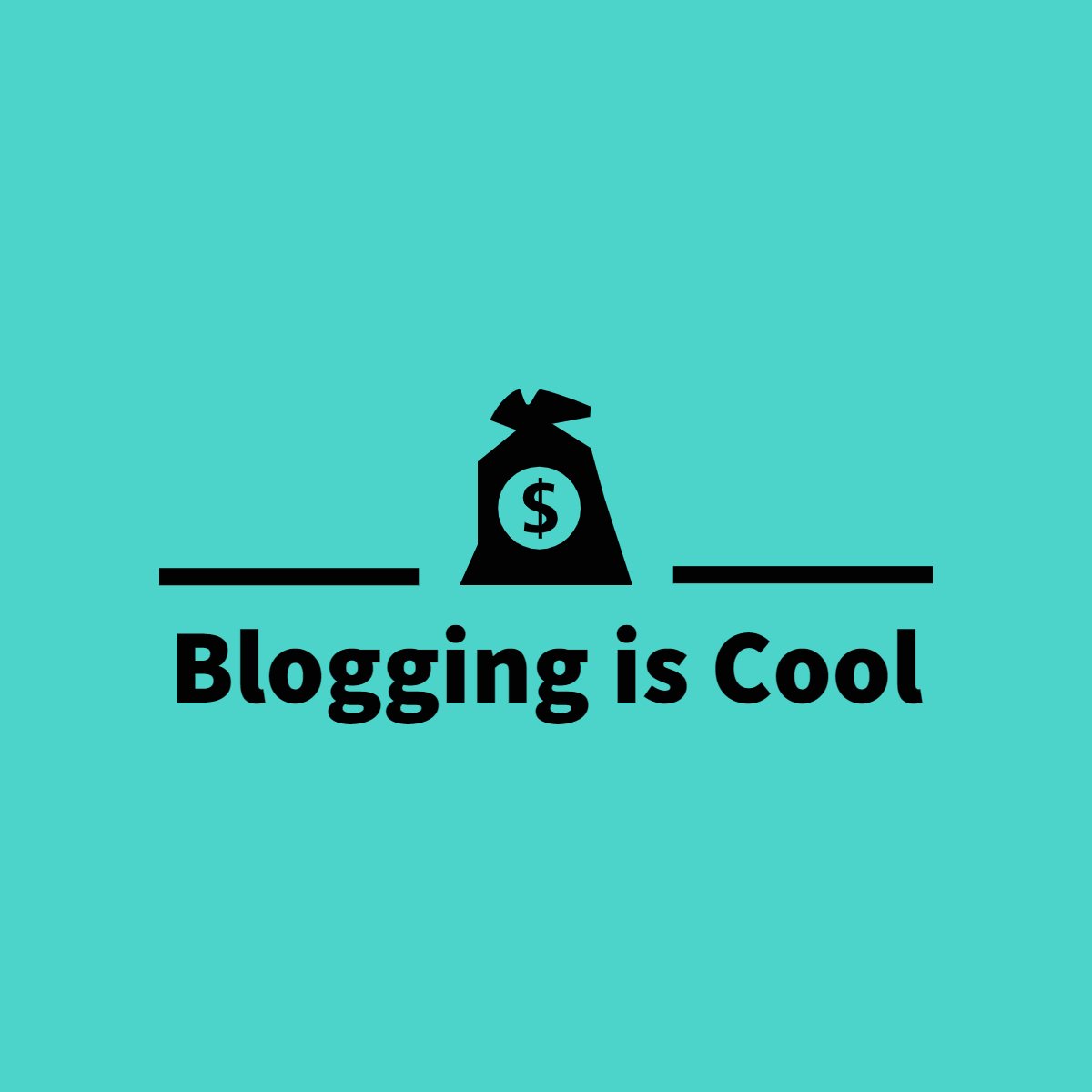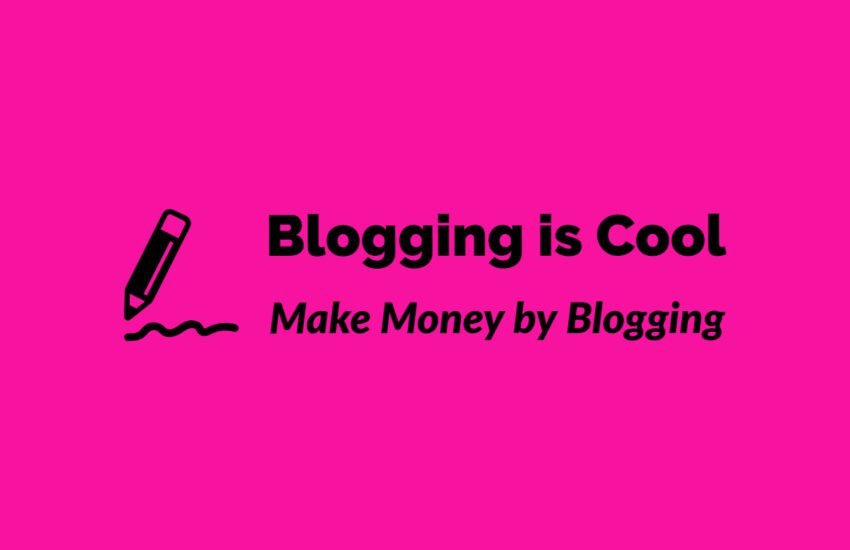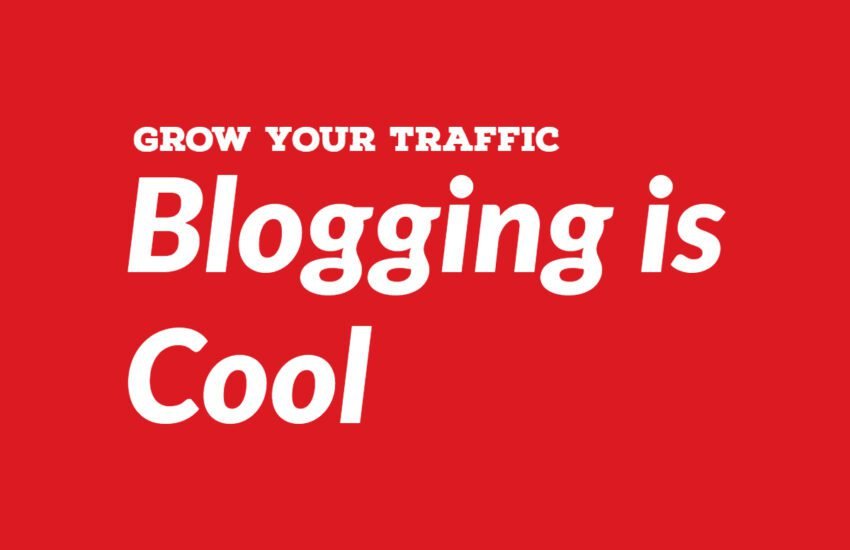Why Every Blogger Should Build an Email List and Use It
As a blogger, one of the most valuable assets you can have is a strong email list.
Building an email list allows you to nurture relationships with your readers, engage with them on a deeper level, and drive traffic back to your blog.
In this article, we will explore the importance of building an email list and how it can benefit bloggers.
- 1. Nurturing Relationships
- 2. Engaging with Your Audience
- 3. Driving Traffic to Your Blog
- 4. Building Authority and Credibility
- 5. Monetizing Your Blog
- Conclusion
- Frequently Asked Questions
- 1. Why is building an email list important for bloggers?
- 2. How does an email list complement other marketing channels for bloggers?
- 3. What strategies can bloggers use to build and grow their email list?
- 4. How can bloggers segment their email list to deliver targeted content to subscribers?
- 5. What types of email content can bloggers send to their subscribers to keep them engaged?
- 6. How can bloggers measure the effectiveness of their email marketing efforts?
- 7. How can bloggers optimize their email campaigns for better engagement and results?
- 8. How can bloggers leverage their email list for monetization and business growth?
- 9. How can bloggers maintain and nurture their email list for long-term success?
- 10. What tools and platforms can bloggers use to manage their email lists and campaigns effectively?
1. Nurturing Relationships
An email list gives you the opportunity to connect with your readers directly.
By collecting email addresses through opt-in forms on your blog, you can reach out to your subscribers with personalized content, updates, and exclusive offers. This direct line of communication allows you to build trust and credibility with your audience, fostering stronger relationships.
2. Engaging with Your Audience
Unlike social media platforms where your content can easily get lost in the noise, email provides a more intimate and focused space to engage with your audience.
You can send out newsletters, share blog updates, and even ask for feedback or opinions. By encouraging two-way communication, you can better understand your readers’ needs and tailor your content to meet their expectations.
3. Driving Traffic to Your Blog
An email list is a powerful tool for driving traffic back to your blog. By including links to your latest blog posts or promoting your evergreen content, you can direct your subscribers to your blog, increasing your website traffic.
Additionally, you can use email marketing to promote special offers, discounts, or exclusive content, enticing your subscribers to visit your blog regularly.
4. Building Authority and Credibility
Having a large and engaged email list can help you establish yourself as an authority in your niche. When you consistently provide valuable content and insights to your subscribers, they will see you as a trusted source of information.
This can lead to increased credibility, more opportunities for collaborations or partnerships, and ultimately, a stronger brand presence.
5. Monetizing Your Blog
An email list can be a valuable asset when it comes to monetizing your blog.
By nurturing relationships with your subscribers and understanding their needs, you can create and promote products or services that cater to their interests.
Whether it’s selling digital products, offering coaching or consulting services, or partnering with brands for sponsored content, your email list can be a reliable source of income.
Conclusion
Building an email list is a crucial step for bloggers who want to nurture relationships, engage with their audience, drive traffic, build authority, and monetize their blogs.
By collecting email addresses, you can establish a direct line of communication with your readers and provide them with valuable content and offers.
Remember to focus on building a quality email list by offering valuable incentives and respecting your subscribers’ privacy. With a strong email list, you can take your blogging journey to the next level.
Frequently Asked Questions
1. Why is building an email list important for bloggers?
Building an email list is crucial for bloggers for several reasons:
Direct communication
Email provides a direct and personalized channel for communicating with your audience, allowing you to deliver targeted content, promotions, and updates directly to their inbox.
Ownership and control
Unlike social media platforms or search engines, where algorithms and policies can impact reach and visibility, an email list gives you ownership and control over your subscriber base, ensuring that your messages are delivered reliably to your audience.
Audience engagement
Email allows you to nurture relationships with your audience, engage them with valuable content, and encourage interaction through feedback, replies, and calls to action.
Traffic generation
An email list can drive consistent traffic to your blog by promoting new posts, featured content, or exclusive offers to subscribers, increasing visibility, and engagement on your website.
Monetization opportunities
Email marketing can generate revenue for bloggers through affiliate promotions, sponsored content, product launches, or direct sales, leveraging your email list as a valuable asset for monetization.
Brand loyalty
Regular communication via email helps build trust, credibility, and brand loyalty among your audience, encouraging repeat visits, referrals, and word-of-mouth marketing.
2. How does an email list complement other marketing channels for bloggers?
An email list complements other marketing channels for bloggers by:
Integration
Integrating seamlessly with other marketing channels, such as social media, content marketing, and SEO, to reinforce messaging, amplify reach, and drive traffic across multiple touchpoints.
Cross-promotion
Cross-promoting blog content, products, or services across email, social media, and other channels to increase visibility, engagement, and conversion opportunities.
Lead generation
Capturing leads and prospects from various sources, including website visitors, social media followers, webinar attendees, and content subscribers, and nurturing them through targeted email campaigns.
Conversion optimization
Optimizing conversion rates and customer journeys by delivering personalized, relevant, and timely messages tailored to the needs, preferences, and behavior of your audience.
Customer retention
Retaining and re-engaging existing customers through email marketing campaigns focused on loyalty programs, customer feedback, exclusive offers, and personalized recommendations.
3. What strategies can bloggers use to build and grow their email list?
Bloggers can use various strategies to build and grow their email list, including:
Content upgrades
Offer valuable content upgrades, such as ebooks, checklists, templates, or exclusive resources, in exchange for email sign-ups on your blog posts or landing pages.
Lead magnets
Create compelling lead magnets, such as free guides, webinars, email courses, or discounts, to incentivize visitors to subscribe to your email list and receive exclusive benefits.
Opt-in forms
Place strategically designed opt-in forms, pop-ups, slide-ins, or exit-intent overlays on your website to capture email addresses and encourage conversions at key touchpoints.
Landing pages
Create dedicated landing pages optimized for email capture, featuring persuasive copy, compelling visuals, and clear calls to action to encourage sign-ups and conversions.
Social media
Promote your email list on social media platforms by sharing teaser content, exclusive offers, or behind-the-scenes updates to attract followers and drive traffic to your email sign-up forms.
Guest blogging
Contribute guest posts to relevant blogs or publications in your niche and include a call to action or author bio with a link to your email sign-up page to capture leads from new audiences.
Webinars or events
Host webinars, workshops, or virtual events on topics of interest to your audience and collect email registrations as part of the event registration process.
4. How can bloggers segment their email list to deliver targeted content to subscribers?
Bloggers can segment their email list based on various criteria to deliver targeted content and personalized experiences to subscribers, such as:
Demographics
Segment subscribers based on demographic attributes, such as age, gender, location, or occupation, to tailor content and offers to their specific interests and preferences.
Behavior
Segment subscribers based on their behavior, interactions, or engagement with your emails, website, or previous purchases to deliver relevant, timely, and targeted messages.
Interests
Segment subscribers based on their interests, preferences, or topics of interest indicated through their subscription preferences, content consumption patterns, or survey responses.
Purchase history
Segment customers based on their purchase history, order frequency, or buying preferences to recommend related products, upsell or cross-sell opportunities, and personalized offers.
Lifecycle stage
Segment subscribers based on their lifecycle stage, such as new subscribers, active users, lapsed customers, or VIP members, to deliver tailored content and engagement strategies.
5. What types of email content can bloggers send to their subscribers to keep them engaged?
Bloggers can send various types of email content to keep subscribers engaged, including:
Blog updates
Share new blog posts, articles, or content updates directly to subscribers’ inboxes to drive traffic to your website and encourage engagement with your blog content.
Newsletters
Curate and compile relevant content, industry news, tips, resources, or curated collections into regular newsletters to provide value, insights, and inspiration to your audience.
Exclusive offers
Provide subscribers with exclusive discounts, promotions, or early access to products, services, or events as a reward for their loyalty and engagement.
Educational content
Deliver educational or instructional content, such as tutorials, guides, case studies, or how-to videos, to help subscribers solve problems, overcome challenges, or achieve their goals.
Customer stories
Share customer testimonials, success stories, or case studies highlighting real-life experiences and outcomes to inspire, inform, and build social proof among your audience.
Surveys or polls
Solicit feedback, opinions, or preferences from subscribers through surveys, polls, or interactive quizzes to gather insights, improve your offerings, and foster engagement.
Automated sequences
Set up automated email sequences, such as welcome emails, onboarding series, nurture campaigns, or re-engagement sequences, to deliver targeted messages based on subscriber actions or lifecycle stages.
6. How can bloggers measure the effectiveness of their email marketing efforts?
Bloggers can measure the effectiveness of their email marketing efforts by tracking key performance indicators (KPIs) and metrics, such as:
Open rate
Measure the percentage of subscribers who open your emails to gauge the effectiveness of your subject lines, sender name, and email preview text in capturing attention and generating interest.
Click-through rate (CTR)
Track the percentage of subscribers who click on links or calls to action within your emails to assess engagement, relevance, and effectiveness in driving traffic to your website or landing pages.
Conversion rate
Monitor the percentage of subscribers who complete desired actions, such as making a purchase, signing up for a webinar, or downloading a resource, to evaluate the effectiveness of your email campaigns in driving conversions and achieving business goals.
Subscriber growth
Track the rate of new subscribers acquired over time and the overall growth of your email list to assess the effectiveness of your lead generation strategies and audience growth efforts.
List churn
Monitor subscriber churn, unsubscribe rates, or inactive subscribers to identify trends, patterns, or factors contributing to list attrition and take proactive measures to retain and re-engage subscribers.
Revenue attribution
Measure the revenue generated from email marketing campaigns, promotions, or sales attributed to specific email segments, campaigns, or touchpoints to quantify the return on investment (ROI) of your email efforts.
Engagement metrics
Analyze engagement metrics, such as email forwards, shares, replies, or time spent reading, to understand subscriber behavior, preferences, and sentiment towards your email content.
7. How can bloggers optimize their email campaigns for better engagement and results?
Bloggers can optimize their email campaigns for better engagement and results by:
Personalization
Personalize email content, subject lines, and calls to action based on subscriber preferences, behavior, or demographics to increase relevance, resonance, and response rates.
Segmentation
Segment your email list into targeted groups based on demographics, interests, or behavior to deliver more relevant, timely, and personalized content to subscribers.
A/B testing
Conduct A/B tests on different elements of your email campaigns, such as subject lines, sender names, copy, design, or calls to action, to identify what resonates best with your audience and optimize performance.
Optimization
Optimize your emails for mobile responsiveness, readability, and deliverability across various devices, email clients, and screen sizes to ensure a seamless user experience for subscribers.
Clear calls to action
Use clear, compelling calls to action (CTAs) that prompt subscribers to take specific actions, such as clicking a link, making a purchase, or sharing content, to drive engagement and conversions.
Timing and frequency
Experiment with different send times, days of the week, and frequency of emails to determine the optimal cadence that maximizes engagement and minimizes unsubscribe rates for your audience.
Engagement tracking
Monitor engagement metrics, such as opens, clicks, and conversions, and use insights from tracking data to refine and iterate on your email campaigns, content, and strategies for continuous improvement.
Automation
Implement automation workflows, such as welcome series, drip campaigns, or abandoned cart emails, to deliver targeted, timely messages based on subscriber actions, triggers, or lifecycle stages.
8. How can bloggers leverage their email list for monetization and business growth?
Bloggers can leverage their email list for monetization and business growth by:
Promotional campaigns
Promote affiliate products, sponsored content, or partner offers to your email subscribers through dedicated campaigns, endorsements, or product reviews, earning commissions or referral fees for qualified sales or leads.
Product launches
Announce new products, services, or digital offerings to your email list before launching publicly, offering exclusive previews, early access, or special discounts to incentivize purchases and generate initial momentum.
E-commerce sales
Drive traffic to your e-commerce store or online shop by featuring product recommendations, promotions, or seasonal offers in your email newsletters, nurturing subscribers through the purchase journey and increasing sales.
Membership or subscription models
Offer premium content, subscription services, or membership tiers exclusively to email subscribers, providing added value, benefits, or access in exchange for recurring revenue or subscription fees.
Lead generation
Generate leads and inquiries for your business, services, or consulting offerings by directing subscribers to dedicated landing pages, contact forms, or booking calendars through targeted email campaigns.
Event promotions
Promote webinars, workshops, live events, or virtual summits to your email list, offering early registration, VIP access, or exclusive perks to subscribers to drive attendance, engagement, and ticket sales.
9. How can bloggers maintain and nurture their email list for long-term success?
Bloggers can maintain and nurture their email list for long-term success by:
Consistent communication
Maintain regular communication with your email subscribers by sending valuable, relevant, and engaging content consistently to keep them informed, entertained, and connected.
List hygiene
Regularly clean and update your email list by removing inactive subscribers, correcting invalid or outdated email addresses, and managing bounce rates to ensure deliverability and list health.
Preference management
Provide subscribers with options to manage their email preferences, frequency settings, or subscription preferences to tailor their experience and control the types of content they receive.
Engagement tracking
Monitor subscriber engagement metrics, such as opens, clicks, and conversions, and use behavioral data to segment, personalize, and target your email campaigns for better results.
Feedback and surveys
Solicit feedback, suggestions, or preferences from your email subscribers through surveys, polls, or feedback forms to understand their needs, interests, and expectations and adapt your content and strategies accordingly.
Re-engagement campaigns
Implement re-engagement campaigns targeted at inactive or dormant subscribers to win back their interest, attention, and engagement through targeted offers, incentives, or content designed to rekindle their interest.
Quality over quantity
Prioritize quality over quantity when it comes to email content, focusing on delivering valuable, relevant, and personalized messages that resonate with your audience and foster long-term relationships.
Customer support
Provide responsive and attentive customer support to address subscriber inquiries, feedback, or concerns promptly, demonstrating your commitment to customer satisfaction and relationship building.
10. What tools and platforms can bloggers use to manage their email lists and campaigns effectively?
Bloggers can use various tools and platforms to manage their email lists and campaigns effectively, including:
Email service providers (ESPs)
Choose an ESP or email marketing platform, such as Mailchimp, ConvertKit, AWeber, or Constant Contact, to manage your email list, create campaigns, and track performance metrics.
Marketing automation
Use marketing automation tools, such as HubSpot, ActiveCampaign, or Drip, to set up automated workflows, sequences, or triggered emails based on subscriber actions, behaviors, or lifecycle stages.
List management
Utilize list management features within your ESP to segment subscribers, manage opt-in preferences, clean and update contact lists, and comply with email marketing regulations and best practices.
Analytics and reporting
Access built-in analytics dashboards, reporting tools, and performance metrics provided by your ESP to track key email marketing metrics, analyze campaign performance, and derive actionable insights for optimization.
A/B testing
Conduct A/B tests on email subject lines, content variations, or design elements using built-in testing features or third-party tools to optimize performance and improve engagement rates.
Personalization
Leverage personalization features and dynamic content capabilities within your ESP to deliver personalized, targeted messages tailored to subscriber preferences, behaviors, or demographics.
Integration
Integrate your email marketing platform with other tools, such as CRM systems, e-commerce platforms, or content management systems, to streamline data synchronization, lead nurturing, and campaign automation processes.
Compliance and deliverability
Ensure compliance with email marketing regulations, such as CAN-SPAM or GDPR, and maintain high deliverability rates by following best practices, managing sender reputation, and adhering to email authentication standards.
By implementing these strategies and leveraging the right tools and platforms, bloggers can effectively build, grow, and nurture their email lists, driving engagement, traffic, and revenue for their blogs while fostering lasting relationships with their audience.


